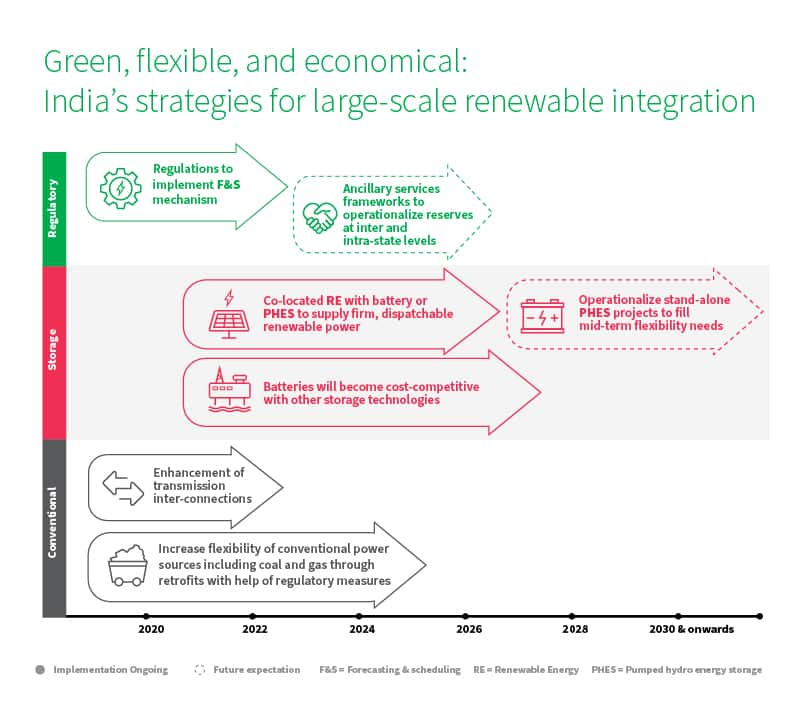Green, flexible, and economical: India’s strategies for large-scale renewable integration
India's ambitious target of 450 GW of renewable capacity by 2030 will require the country to adapt its power system to the increasing variability of supply and demand, to minimize the risk of curtailment and secure grid operations. There are important measures to be considered from both the short-term operations point of view and the long-term system planning perspective.
India's power system's flexibility requirement is expected to skyrocket from 30 GW in 2019 to more than 140 GW by 2030. As the share of renewable energy in total generation grows, the country will need fast- ramping infrastructure, including flexible generation and market mechanisms, while considering the economic viability of these options.

The midterm focus will be on improving the supply-side flexibility from the conventional sources with coal expected to play a crucial role. However, increasing coal flexibility may be cost-competitive in the midterm only when other commercial flexibility options are limited. In the long -term, India will need to transition towards flexible resources that are also low carbon, including energy storage.
Pumped hydro is the most economic energy storage resource in the short term, but siting and other environmental challenges are likely to constrain the development of new projects, which will create opportunities for battery storage. In the short- to medium term, co-located storage projects with renewables will be a preferred mode of deployment of batteries to provide a firm supply of green power and meet demand at peak hours of the day.
As the cost of batteries declines significantly during the next decade, batteries will become competitive with pumped hydro by 2030. The cost decline will be driven by increasing economies of scale, a maturing value chain, and increasing competition, and result in batteries becoming the most economical option for providing grid management and storage capabilities in the long term. However, to maximize the value of battery storage in the Indian market, the country will need to define a clear long-term energy storage policy.
To learn more about our Asia-Pacific energy market research, visit our Asia-Pacific Regional Integrated Service page.
Ankita Chauhan is a senior renewable analyst on the Gas, Power, and Energy Futures team at IHS Markit, covering research and analysis for Indian and South Asian markets.
Posted on 7 October 2020.
This article was published by S&P Global Commodity Insights and not by S&P Global Ratings, which is a separately managed division of S&P Global.
